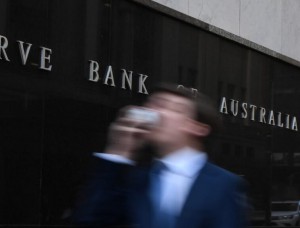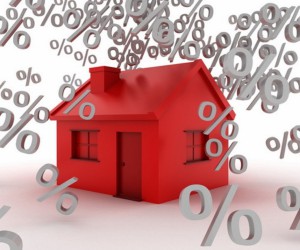There are more interesting articles, commentaries and analyst reports on the Web every week than anyone could read in a month.
Each Saturday morning I like to share some of the ones I’ve read during the week.
The weekend will be over before you know it, so enjoy some weekend reading.
Australian bank economists are continuing to push back their forecasts for the next RBA rate hike
Will they or won’t they – that is the million dollar question when it comes to the RBA’ rate hike decision.
This article from Business Insider looka at the forecasts of Australian bank economists.
Economists from Westpac and Commonwealth Bank have extended their forecasts for the next RBA rate hike.
It forms part of a consistent trend in recent months, following similar changes from the NAB in May and ANZ in June.
In line with recent comments from the RBA, all four big banks still expect the next move in rates to be up.
But their timeframes for when it will happen continue to be extended.
Here’s the latest scoreboard for rate hike expectations among the big four:
At December 2020, Westpac’s forecast is now well in advance of the median forecasts among economists surveyed by Bloomberg, which have the first rate rise occurring by September 2019.
Westpac chief economist Bill Evans said the RBA has set a “high bar” for cutting rates.
That means rates are unlikely to move lower, even though “the Australian economy is currently being subject to tightening financial conditions, despite the RBA cash rate remaining on hold”.
By tighter conditions, Evans is referring to the notable slowdown in credit growth for residential mortgage lending, particularly to housing investors.
He said tighter lending standards mean the ongoing price falls in Australia’s housing market “look set to be sustained for at least the remainder of 2018 and 2019, with soggy markets likely prevailing through 2020”.
In extending his forecast for the next rate hike to November 2019 from February 2020, CBA chief economist Michael Blythe also cited housing as part of the core policy challenge facing the RBA.
“The binding constraint in the monetary policy debate is the interaction of high levels of household debt and weak income growth,” Blythe said.
He added the credit squeeze is being exacerbated as more people shift into principal & interest repayments from interest-only loans.
Blythe also highlighted some recent subtle shifts in RBA commentary, particularly around its target range for inflation of 2-3%.
The central bank now refers to its inflation target as “returning to the midpoint”, instead of “2-3% over the cycle”.
And in its updated economic projections earlier this month, the RBA said it expects inflation growth to remain at 2.25% all the way to the end of 2020.
Taken together, those two factors “could be read as implying no rate changes this side of 2021”, Blythe said — which would be in line with Westpac’s forecasts.
However, “applying the CBA magnifying glass to the RBA’s inflation chart reveals the point estimates have a modestly rising trend continuing during 2020”, Blythe said.
Commonwealth Bank
“And that is probably enough to get a rate rise over the line by late-2019.”
Although NAB’s latest business survey pointed to some extra tightness in the labour market towards the end of this year, Westpac’s Evans expects upward pressure on wages — and by extension inflation — to remain low.
Read the full article here
More bums on seats in FY2018
It would seem all roads are leading to Australia.
This Blog by Pete Wargent shows the statistics.
Australia is very popular
Permanent and long term arrivals increased 4½ per cent in FY2018 to 808,480, up from 773,400 a year earlier.
That’s a record high.
Read the full article here
New Zealand bans foreigners from buying property in effort to clamp down on house price growth
If you’re a foreigner who’s been thinking about investing in New Zealand – you may want to think again.
According to an article on ABC News New Zealand has banned foreigners from buying property.
New Zealand’s Parliament has passed a law to ban many non-resident foreigners from buying existing homes, completing the Labour-led Government’s election campaign pledge.
Prime Minister Jacinda Ardern campaigned before September’s election on a promise to clamp down on house price growth and reduce high rates of homelessness, in part by banning foreign buyers.
“This is a significant milestone and demonstrates this government’s commitment to making the dream of home ownership a reality for more New Zealanders,” Associate Finance Minister David Parker said.
Foreign ownership has attracted criticism in recent years as New Zealand grapples with a housing crunch that has seen average prices in the largest city Auckland almost double in the past decade and rise more than 60 per cent nationwide.
House price growth has tapered off in the past year in part due to restrictions imposed on lending by the central bank, which was becoming alarmed at the potential financial stability risk of an overheated market.
Figures released by the Real Estate Institute of New Zealand on Wednesday showed median house prices had slipped 1.8 per cent to NZ$550,000 ($498,600) in July from the previous month, although they were still 6.2 per cent higher than the same time the previous year.
But according to Statistics New Zealand, the majority of overseas buyers were from China and neighbouring Australia, and Australians are exempt from the ban.
“Is the ban wise or useful? We think it’s neither,” Chinese real estate portal Juwai.com spokesman Dave Platter said.
“Foreign buying … tends to be focused on new development, making clear again that foreign investment leads to the creation of new dwellings. That’s vital in a market with a housing shortage like Auckland.”
The Government slightly relaxed the proposed ban in June so that non-residents could still own up to 60 per cent of units in large, newly built apartment buildings but would no longer be able to buy existing homes.
Read the full article here
West side story
Sydney’s western suburbs have certainly come a long way, and they don’t seem to be slowing down.
In this article for Switzer, John McGrath explains what’s going on.
When I started in real estate 35 years ago, Western Sydney didn’t have the relevance it does now.
It’s taken just three decades for this quiet, outlying region to transform into the country’s third largest economy and home to almost half of Sydney’s residents today.
In the 1980s, housing affordability wasn’t a major issue in Sydney.
People could generally buy a long-term home close to the city where most of them worked.
There was nothing really pushing people to move ‘out west’ unless they particularly liked the area, wanted more land or wanted to be close to manufacturing jobs.
However, since then Sydney’s economy and population has exploded, necessitating massive urban sprawl of housing to our west.
As the region’s population grew, so did services.
Major shopping centres, schools, hospitals, transport and recreational amenities were developed and this attracted more families again.
While all this development was going on, the sheer size of Western Sydney and its distance from the CBD kept property affordable.
It was an ideal starting point for young families buying their first home and unskilled immigrants looking to start a new life amongst fellow countrymen in the west’s rising immigrant communities.
In the early 2000s, we saw more of Sydney’s middle income bracket move west seeking more land to build their dream homes (remember the McMansions of the early 2000s)? Sydney’s property boom during this period made housing close to the city more expensive and encouraged more people to ‘go west’ for value.
Ongoing population growth boosted by surging immigration has forced governments to invest in further infrastructure to service this burgeoning region.
House prices have gone up a lot – in fact, CoreLogic figures* show that among the 22 Sydney suburbs with a 20-year annual compound growth rate in median house prices of 10% or more, 91% of them were in Western Sydney.
Parramatta has cemented itself as Sydney’s second CBD and evolved from a suburb ‘on the outskirts’ in the 1980s to the geographic heart of our rapidly expanding city today.
Parramatta is a thriving economic hub with more than $10 billion to be invested in transport, education, health, sport and cultural projects between 2016-2021.
This includes Stage One of WestConnex, the Parramatta Light Rail, the redevelopment of Westmead health precinct, a new cultural centre including the Museum of Applied Arts and Sciences on the Parramatta River; and a new 30,000-seat Western Sydney Stadium to replace the old Pirtek Park and swimming centre.
A dramatic 18% increase in Parramatta’s population is expected between 2016-2021.
Western Sydney has several other significant economic hubs, including Liverpool, Blacktown, Penrith and Rouse Hill.
Rouse Hill was among the 22 suburbs with the best house price growth, averaging 10.9% per annum since 1998.
This suburb is still developing but it has already become a crucial suburban centre for the North West.
Read the full article here
The Clothes That Increase Your IQ
We’ve all heard that a good suit makes a great first impression – but did you know it could also increase your IQ?
An article on Spring.org.uk looks at the clothes that can make you sharper in more ways that one.
People wearing these clothes thought in broader, more holistic ways.
Wearing formal clothes can make you smarter, psychologists have found.
Dressing up makes people feel powerful and encourages the brain to focus on ‘big picture’ thinking.
People feel more competent and rational when they are wearing formal clothing.
Thinking in a more abstract way helps people stick to long-term goals and avoid short-term temptations, research has found.
Abstract thinking also increases certain types of creativity, allowing people to make connections between disparate things.
The study’s authors write:
“Formal clothing (like formal language) signals situations that are not casual and familiar (i.e., situations of increased social distance; Easterling et al.,1992).
Indeed, we found that over and above any sociometric status felt when wearing formal clothing, this enhanced social distance (feelings of power) predicts abstract processing.”
All were given various cognitive tasks to do while wearing the formal and then the casual clothes.
The authors explain the results:
“…clothing formality is associated with abstract processing, with greater formality associated with enhanced abstract processing.”
People felt more competent and rational when wearing the formal clothes, the authors explain:
“Wearing formal clothing is thus related to psychological formality and social distance, whereas casual clothing is related to intimacy and familiarity.
Read the full article here












No comments:
Post a Comment